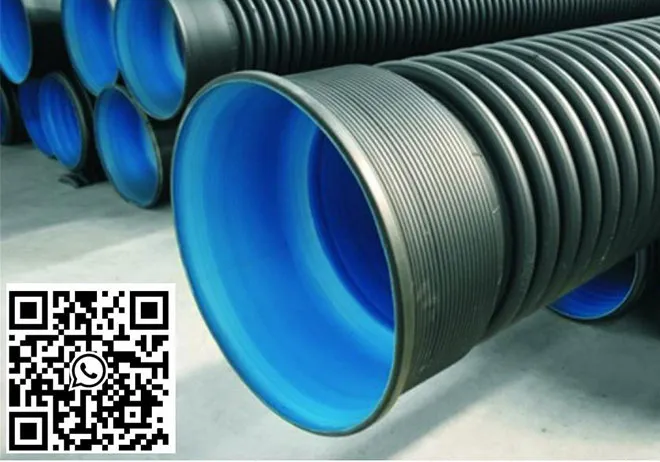Dec . 20, 2024 18:47 Back to list
ppr pipe for hot and cold water products
Understanding PPR Pipes for Hot and Cold Water Applications
Polypropylene Random Copolymer (PPR) pipes have gained significant popularity in the plumbing industry, particularly for conveying hot and cold water. This rise in popularity can be attributed to their remarkable properties, which make them ideal for a variety of applications in residential, commercial, and industrial settings. In this article, we will explore the benefits, properties, installation methods, and applications of PPR pipes, focusing on their suitability for hot and cold water systems.
What are PPR Pipes?
PPR pipes are made from polypropylene, a thermoplastic polymer known for its durability and resistance to heat and chemicals. The random in the name refers to the random arrangement of polymer molecules, which enhances the material's flexibility and strength. PPR pipes are available in different diameters and pressure ratings, making them versatile for various plumbing needs.
Advantages of PPR Pipes
1. Temperature Resistance PPR pipes are designed to handle high temperatures, making them suitable for hot water systems. They can typically withstand temperatures up to 95°C (203°F) without deforming or losing their structural integrity.
2. Chemical Resistance One of the significant advantages of PPR pipes is their resistance to a wide range of chemicals, including acids and bases. This characteristic makes them ideal for both domestic water supply and industrial applications.
3. Corrosion Resistance Unlike metal pipes, PPR pipes do not corrode over time. This property ensures a longer lifespan and reduces maintenance costs associated with leakages or pipe failures.
4. Low Thermal Conductivity PPR pipes have low thermal conductivity, which helps in minimizing heat loss in hot water systems. This feature enhances energy efficiency and helps maintain the desired water temperature.
5. Lightweight PPR pipes are significantly lighter than traditional metal pipes, making them easier to handle and transport. This characteristic also simplifies the installation process, reducing labor costs.
6. Jointing Methods PPR pipes can be joined using various methods, including fusion welding, which creates a strong, leak-proof joint. This seamless connection further enhances the overall reliability of the piping system.
Installation of PPR Pipes
ppr pipe for hot and cold water products

Installing PPR pipes is relatively straightforward compared to other materials. The installation process generally involves the following steps
1. Cutting PPR pipes can be easily cut to the required lengths using appropriate cutting tools, ensuring clean and smooth edges.
2. Heating and Fitting The most common method for joining PPR pipes is heat fusion. The ends of the pipes are heated using a fusion tool until they reach the optimal temperature, after which they are joined together. This method ensures that the joints are robust and leak-free.
3. Testing Once the installation is complete, the system should be tested for leaks by pressurizing the pipes. This step is crucial to ensure that the installation meets local codes and standards.
Applications of PPR Pipes
PPR pipes are widely used in various applications due to their inherent properties
1. Hot and Cold Water Supply They are particularly suitable for both hot and cold water supply systems in residential and commercial buildings.
2. Heating Systems PPR pipes are commonly used in underfloor heating and radiator heating systems due to their heat resistance.
3. Industrial Applications Their chemical resistance makes PPR pipes an excellent choice for industrial water systems and chemical processing facilities.
4. Swimming Pools In swimming pool installations, PPR pipes are utilized for water circulation systems owing to their durability and resistance to chemical treatments.
Conclusion
PPR pipes present a viable solution for modern plumbing needs, particularly for hot and cold water systems. Their impressive qualities—temperature resistance, chemical stability, corrosion resistance, and ease of installation—make them a preferred choice for homeowners and professionals alike. As the demand for reliable and efficient plumbing solutions continues to grow, PPR pipes are likely to remain at the forefront of the industry, paving the way for sustainable plumbing practices in the years to come.
-
High-Quality PVC Borehole Pipes Durable & Versatile Pipe Solutions
NewsJul.08,2025
-
High-Quality PVC Perforated Pipes for Efficient Drainage Leading Manufacturers & Factories
NewsJul.08,2025
-
High-Quality PVC Borehole Pipes Durable Pipe Solutions by Leading Manufacturer
NewsJul.08,2025
-
High-Quality PVC Borehole Pipes Reliable PVC Pipe Manufacturer Solutions
NewsJul.07,2025
-
High-Quality UPVC Drain Pipes Durable HDPE & Drain Pipe Solutions
NewsJul.07,2025
-
High-Quality Conduit Pipes & HDPE Conduit Fittings Manufacturer Reliable Factory Supply
NewsJul.06,2025

